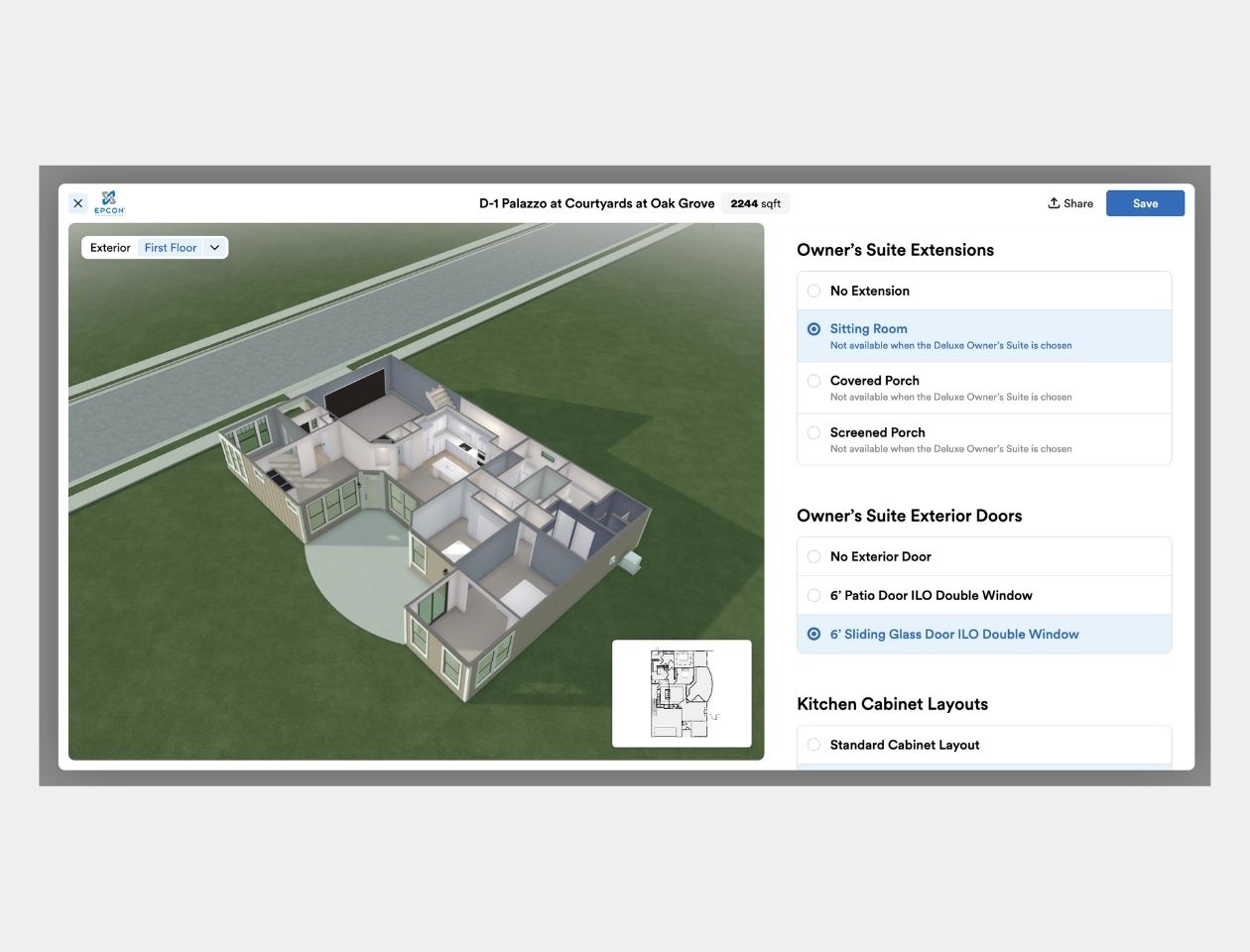This article is written by Jason Locher, BIM specialist, homebuilding veteran, and mastermind behind 5,000+ successful builds.
My Journey in Homebuilding Technology
Navigating through my decades-long career as a homebuilding technologist for reputable builders in the Southwest, I have experienced firsthand the challenges and rewards of various homebuilding software tools. From conventional drafting to the latest software solution, I'll share my journey and give builders insights on building their tech stack.

Our company prided itself on building semi-custom homes, beautifully tailored to customers' lots. With more than a hundred plan types and a multitude of options at our disposal, we faced the daunting task of managing plans, options, and drawing sets. For years, we grappled with making CAD a productive tool, until the company leadership agreed that Revit might be the solution we were seeking for standardization and efficiency. As a seasoned professional with an eclectic mix of architectural, structural engineering, and technological expertise, I was appointed to pioneer the transition.
The Challenges of Revit for Homebuilders
However, despite Revit's promise of automated operations through parametric modeling and families, we found ourselves entrenched in a time-consuming cycle of creating and maintaining countless models. It became clear that while Revit was crafted to standardize architectural drafting, it wasn't tailored to fit the specific needs of homebuilders. For those contemplating a shift from CAD to Revit, I'd like to share some challenges that you may encounter:
- Complexity Management: Revit lacks the capability to efficiently represent all intricate relationships in a building to manage options. This results in a vast proliferation of separate models and families which become overwhelming and necessitate dedicated staff to maintain.
- Change Management: Updating plans and options becomes a Sisyphean task when they exist in separate models and families. Any small change, whether due to supply chain disruptions or sourcing a better-priced component, would lead to an arduous manual process filled with potential for errors.
- Lack of Automation: Data across sales, drafting, and purchasing departments remains disconnected, leading to critical document discrepancies.
- Implementation Cost: The task of implementing Revit is both labor-intensive and costly. Our team ballooned to over 40 members, a considerable part of whom were hired to manage permissions and locations of the multiplying models and files. The need to use plugins to fill gaps was amplified due to Revit's limitations, but these plugins themselves often fell short and proved to be difficult to maintain and manage. Add to this the recurring software and hardware issues, and the true cost of implementation becomes even clearer.
The Next Generation of Homebuilding Tech
This was my reality until a fortuitous demo from Higharc's founding members introduced me to their innovative platform built from the ground up for homebuilders. Higharc, started in 2018, had harnessed robust, rules-based reasoning technology, creating a web-based platform to address the unique needs and struggles of the homebuilding industry.
The standout feature for me was Higharc's integration of parametrics and rules, capable of capturing complex relationships in a building. This unique combination offers centralized control over every component, from intersecting options, material types, to building standards, all managed from a singular, centralized data model. This paradigm-shifting concept, which Higharc calls the "intelligent building model," isn't just inspiring—it's transformative. Furthermore, it provides a platform designed to effortlessly manage change and foster agility, enabling homebuilders to adapt swiftly and confidently to the dynamic nature of their business.

The Intelligent Building Model
In Higharc, the intelligent building model isn't just a concept—it actually harnesses the central data model that manages all key elements utilized in plans. It controls options, components, selections, elevations, and code rules. This model contains all the information needed to automate deliverables across each department in a homebuilding business. For example, sales can interactively configure a home in 3D with the customer, providing an accurate, on-demand custom brochure of the designed house. Upon contract signing, permit-ready Construction Documents (CDs) are instantaneously available, along with the complete list of key building measures for purchasing. All documents are automatically updated without manual intervention when a change is needed, streamlining the entire process. Thus, Higharc becomes more than a tool—it evolves into the master control center for a homebuilder's operations, effectively handling change and enabling business agility.
Joining Higharc was a major step in my career. Today, as an implementation lead, my goal is to support homebuilders across the country in navigating their own journey. My hope is that by sharing my personal experiences, I can help them avoid the hurdles I faced and help them see the possibilities that a tool like Higharc can offer.
How Higharc Empowers Homebuilders
If you're a homebuilder feeling tied down by traditional CAD products, I can relate. It's this shared experience that drew me to Higharc. This platform is more than just a tool; it's an innovative approach that acknowledges and addresses our industry's unique challenges. It represents an exciting shift in the way we design homes, keeping pace with the broader technology trends reshaping our world. Choosing to embrace Higharc and the changes it brings means positioning your business to seize new opportunities in the ever-evolving landscape of homebuilding. And in doing so, you might find that you're not just keeping up with the competition—you're staying steps ahead.
See higharc in action
Discover how Higharc can empower your team to conquer change, modernize your buyer experience, and decrease cycle times.
Book a demo



.png)




.png)



.jpg)








%20(1260%20x%20960%20px).jpg)
%20(1260%20x%20960%20px).jpg)

.jpg)

.jpg)


















